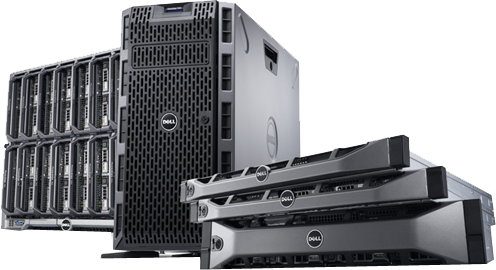How Often Should You Replace Your IT Equipment?
For some, the thought of an IT hardware refresh in their business is an eye-watering experience. For others, they love the latest tech and must have it. In this article, we will outline practical advice on exactly how often you should think about replacing your business IT hardware.
Desktops & Laptops
As a rule of thumb, most end-user computers are past their best after three years of use. This can be extended to 5 years with some smart decisions when purchasing or upgrading.
It's common knowledge that having slightly more operating memory (RAM) is a good thing. As software becomes increasingly complex, so do the memory requirements. When you're presented with options regarding what specification laptop/desktop, remember that more RAM is better. Today, 8GB is a minimum requirement. However, spending a little extra on 16GB RAM is well worth the money if you want the most out of your investment. Not only will the system perform better for longer, but your staff will also be more efficient in the short term.
The other piece of hardware that is well worth investing a little extra in is a solid-state drive. Many suppliers still quote desktops and laptops with a standard hard drive. happier IT always quotes systems that use solid-state drives. If you don't know what a hard drive is - it's the place where all the local data is stored. A standard hard drive has spinning platters and is mechanical. Probably the most common bottleneck in a modern-day PC or Mac. Opting for a solid-state disk (SSD) eliminates this bottleneck. Computers boot up faster in the morning, and there is no wait time when opening an application.
These small incremental efficiency improvements all add up over time and can make a noticeable difference in staff productivity.
Servers
Many will tell you that servers are "old hat" and that you should have everything in the cloud. While this is true, there are some prevalent reasons why an on-premise server infrastructure may be required in the business. Local access to shared resources like files and Active Directory is still something that many businesses need. While internet connectivity has improved dramatically in the last ten years, the size of files has also increased dramatically. If your business uses large files such as images and CAD files, having a local server may still be a necessity. Many businesses also require servers to operate their business/finance applications. Changing to new cloud-based applications is disruptive and requires extensive training, while moving existing on-premise apps to the cloud may not be cost-effective.
As such, the question we're often asked is how often you should upgrade servers? 5 years maximum is always our answer. This is mainly because even if a server is performing ok and can be upgraded, the risk of catastrophic component failure due to wear increases exponentially. Furthermore, even with an extended warranty, parts availability is diminished after 5 years, potentially extending downtime. Can you imagine having to source the replacement part, order and wait for delivery? That could have a real effect on your business.
Refresh Plan
As part of our services, we can carry out a complete review of the age and upgrade/renewal options open to you. We then help you develop a refresh plan to ensure all your computers and servers are replaced on schedule. We also provide our clients with asset and warranty information directly in our portal, have integrated device age into our best practices reports, and provide a monthly asset age / warranty status report in your Report Vault.
If you’d like more information or to review your refresh plan with your Client Success Manager email teams@happierit.com. If you’re not yet a happier IT client and are interested in learning more about our services, please schedule a call with a happier IT sales representative.


